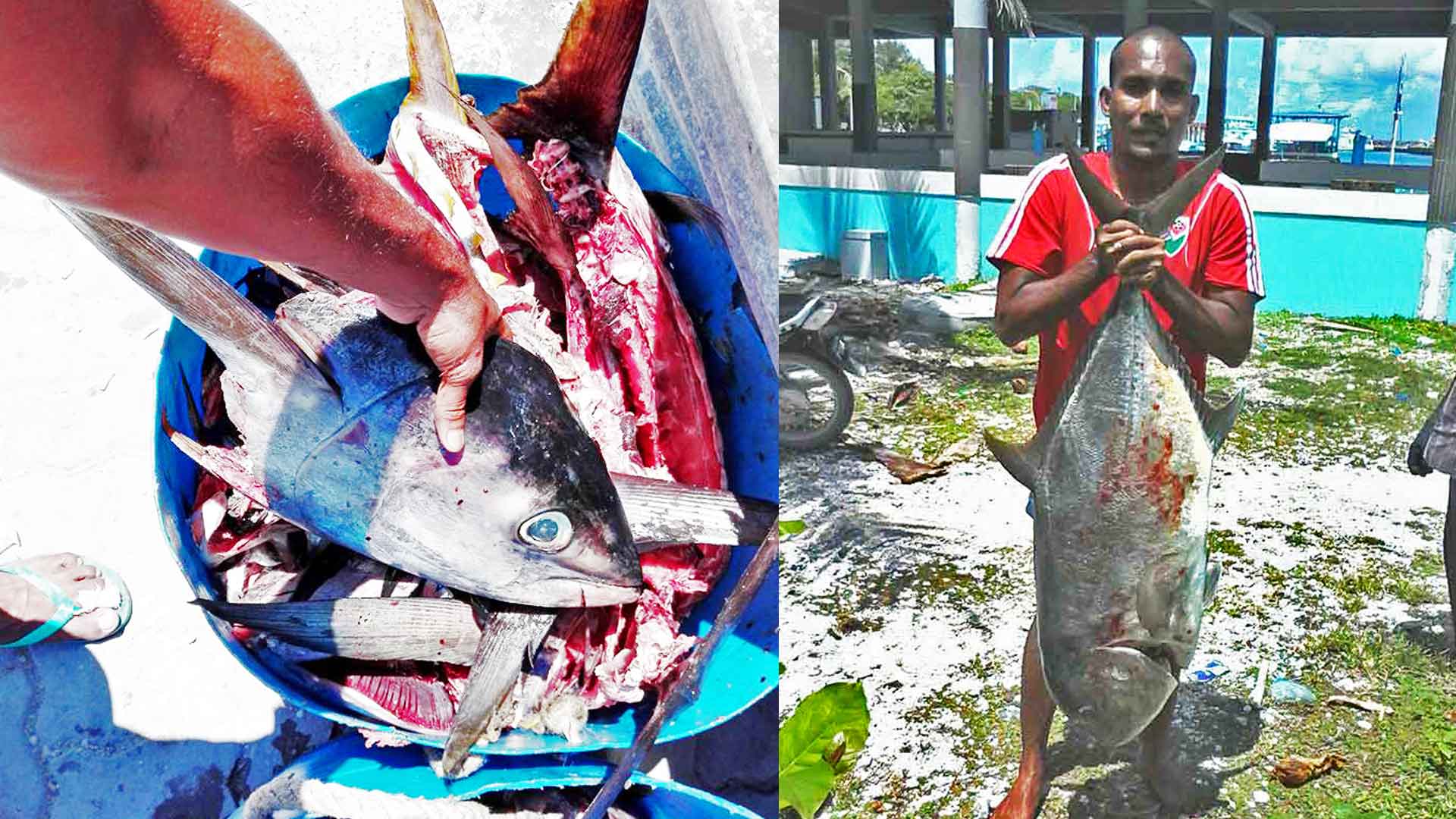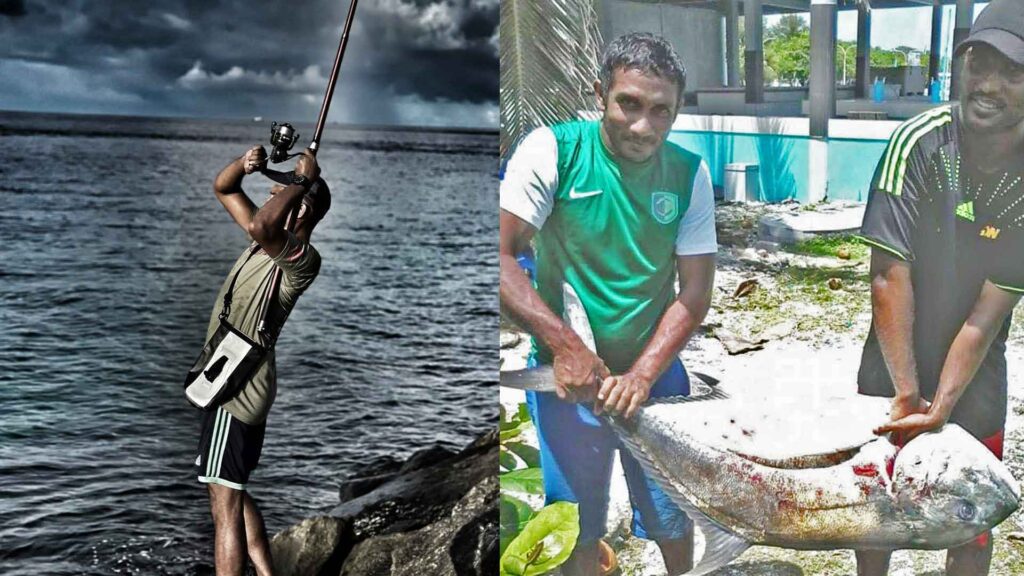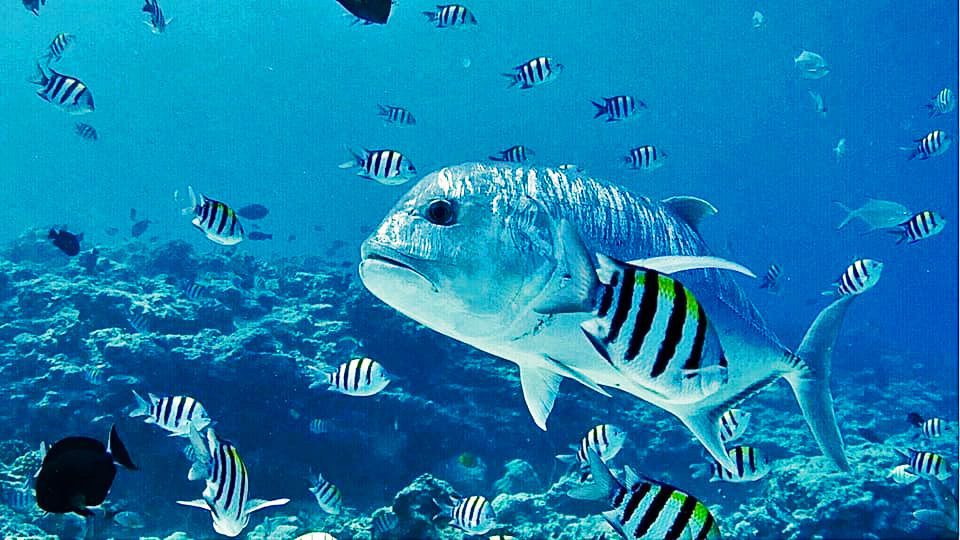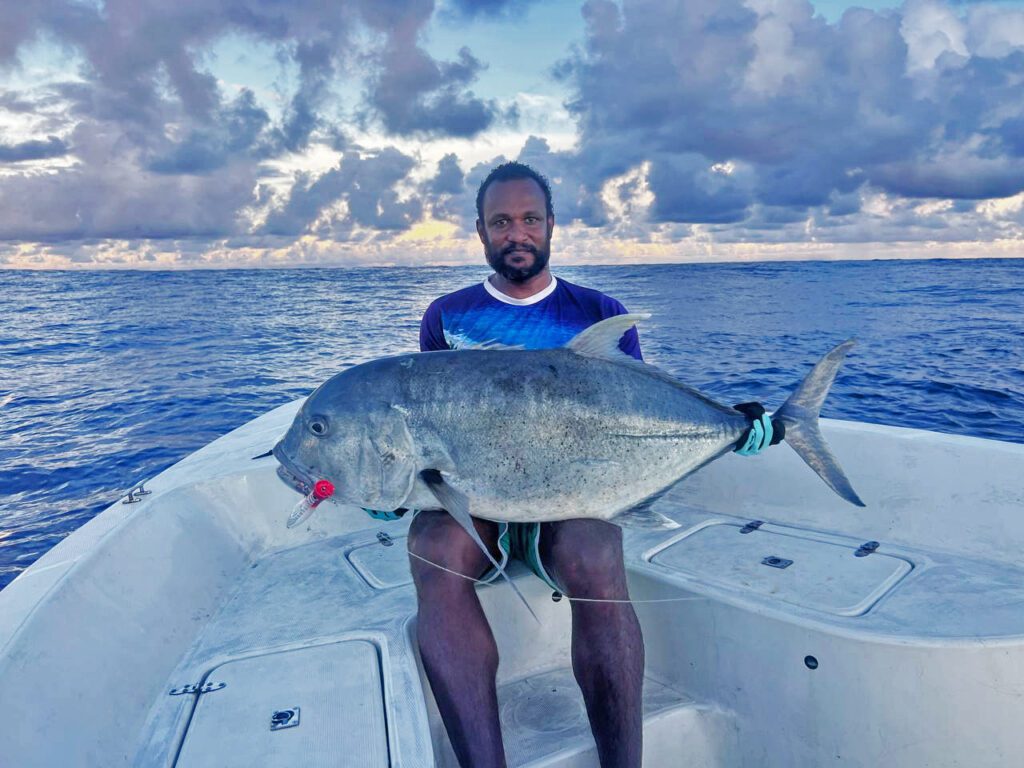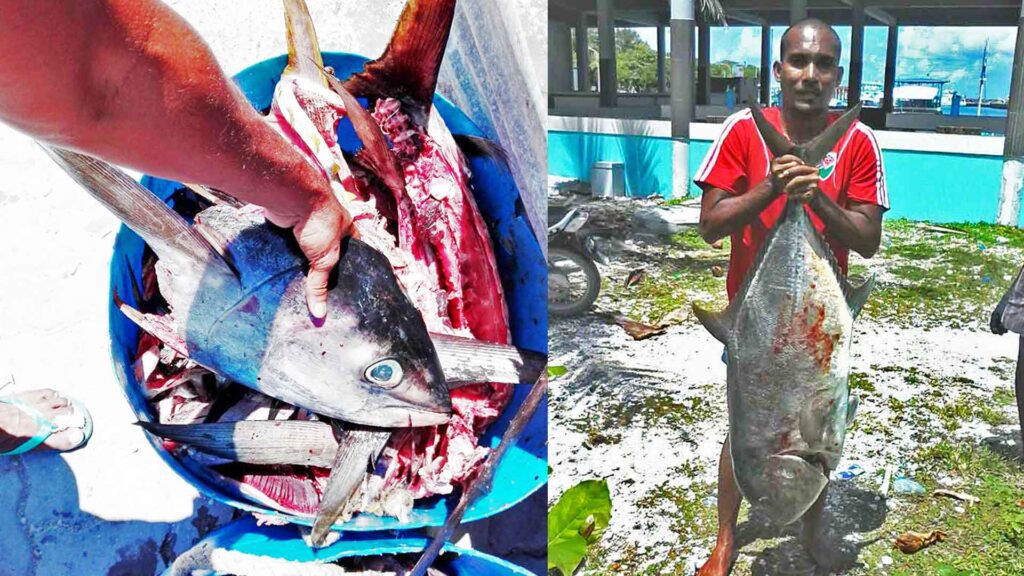
This is a brief account of how we used fish heads to land large, giant trevallies on my island, Fuvahmulah. Giant trevallies are my favourite fish in the ocean. There are several areas on our island where these brutes can be landed, including the southern beach region, Thoondu beach, Neregando beach, and the northeastern part of the island.
At around 8:30 a.m., we go to the fish market and wait for the fish cutters to give us some tuna heads and other fish waste. We have to wait in the market area while they gut some fish. We carry a bucket to collect fish heads and waste. Once we have enough fish heads, we go to the beach near the fish market area.
We begin to deploy our fishing line to prepare for this war and to catch one of the most powerful fish in the water. The monofilament line that we use is 300 lbs. A thin rope, which we call nano, is linked to one end of the monofilament line so that we can easily hold it and drag the fish to the beach. We usually utilise hook size 1. But we recently altered the hook by using octopus hooks.
At low tide, the water depth on the reef will be about two feet. We’ll rig the fish head and keep the bait on the reef front, around 30 to 50 feet from the beach. When high tide approaches, we deploy the line. We’ll wait for the predators to emerge from the narrow passageways on the reef and approach the bait. Some of us stay atop the rock boulders to observe if they ascend from the reef front and let us know if the GTs are approaching.
The huge black GTs simply swallow the fish head whole and swim away at lightning speed, sending all of us on the beach astray. Three or four of us will hold the fishing line. The GT can’t land in the open sea, so we won’t let it escape there. So we pulled as hard as we could. The powerful fish would pull us all into the water. However, we struggle to maintain control of the fishing line. The GT will pull us five to ten feet towards the beach sometimes. Then again, we must pull it back.
The fight is fierce and physical. It’s one powerful fish versus five humans. The battle will last between 15 and 30 minutes. If the GT does not go beyond the reef front, we will be able to land it in just 15 minutes. One interesting story I’d like to share is about skilled fishermen who catch these big GTs while standing on a single rock. They perform a separate trick. They also use the same strength monofilament (300 lb).
However, they will first look for the GT to ascend and then head to the beach in quest of bait. They will throw the fish head so the fish can see the bait when the GT turns around and heads back towards the side of the reef. Calculating the time when the fish begin to swim from the beach makes casting bait extremely effective.
If the GT does not gallop to the bait, the fisherman must once again be ready for the moment when the GT approaches the shore and turns around to return. When the fisherman catches a GT on the line, he uses only his two arms to guide the beast from a rock boulder. He would only allow a few runs for the fish. Then he pulls the fishing line. In this fashion, he would manoeuvre the fishing line to overwhelm the GT.
He only needs 30 minutes to land these creatures. We’ve never tried this method. I’ve seen a fisherman named Abdul Haqu land these brutes multiple times. I’ll try to include the big boulder on which he stands to overpower these massive GTs.
